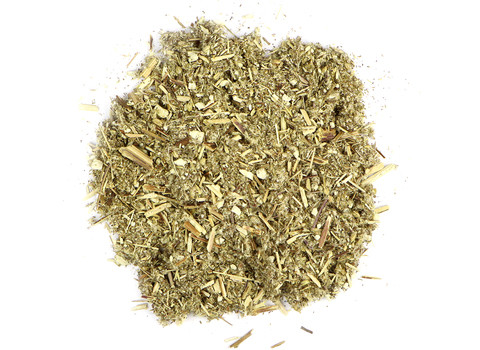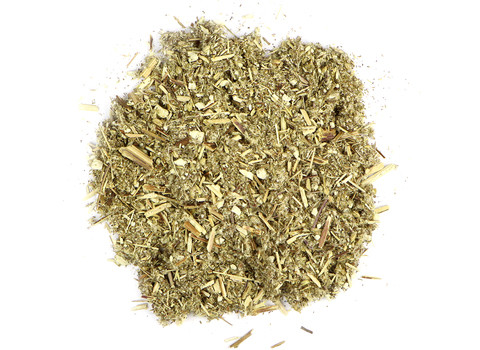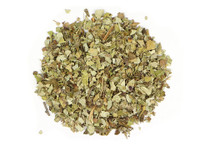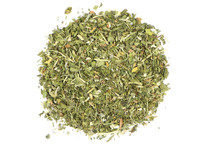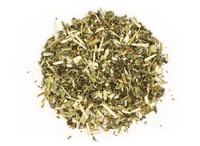-
Product Description
COMMON NAME
Standardized: mugwortBOTANICAL NAME
Artemisia vulgaris L.
Plant Family: AsteraceaeOVERVIEW
Mugwort is a common plant in the British isles; its angular, purple stalks growing more than three feet in height. It bears dark green leaves with cottony down undersides. Mugwort is said to have derived its name from having been used to flavor beer before the wide use of hops. The botanical name is derived from Artemis, the Greek goddess of the hunt, fertility, and the forests and hills. Roman soldiers were known to put mugwort in their sandals to keep their feet from getting tired. Native Americans equate mugwort with witchcraft. They believed that the rubbing of the leaves on the body are said to keep ghosts away, and a necklace of mugwort leaves is said to help protect against dreaming about the dead. It has been believed that John the Baptist wore a girdle of mugwort in the wilderness for protection. Other magical attributes include protection for road weary travelers, and general protection against the evils of the spirit realms.PARTS USED
Dried aerial portions.TYPICAL PREPARATIONS
Traditionally used as a tea, may also be taken as an extract. Popularly mixed with other botanicals to create dream and sleep pillows for the invocation of dreams.SUMMARY
Many have reported that if mugwort is used as a tea before bed, or even just sprinkled around your pillow, a person may have lucid dreams that night.PRECAUTIONS
Not for use in pregnancy except under the supervision of a qualified healthcare practitioner.
We recommend that you consult with a qualified healthcare practitioner before using herbal products, particularly if you are pregnant, nursing, or on any medications.This information has not been evaluated by the Food and Drug Administration. This product is not intended to diagnose, treat, cure, or prevent any disease. For educational purposes only.
-
Product Reviews
-
Find Similar Products by Category

